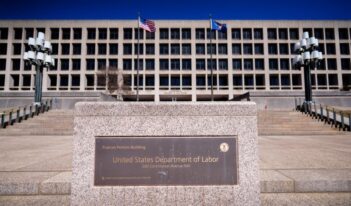
The fiduciary rule may still be enforceable because of the Labor Department’s failure to act.
On March 15, 2018, the U.S. Court of Appeals for the Fifth Circuit struck down the controversial “Fiduciary Rule” in a decision by Judge Edith Jones that was none too subtle concerning its intended effect. The court noted that the Administrative Procedure Act requires a court to “hold unlawful and set aside agency action” that it determines is “arbitrary, capricious, … not in accordance with law” or not in accordance with statutory limitations. The opinion concluded with the words “we reverse the judgment of the district court and vacate the Fiduciary Rule in toto.”
The Fiduciary Rule was first proposed by the U.S. Department of Labor in 2010, and quickly met fierce resistance from the retirement industry. The Rule purported to jettison the Department’s decades-old definition of “investment advice fiduciary,” and to erect in its place a new and substantially expanded test that would subject a much broader range of financial services brokers and advisers to the fiduciary conduct rules of the Employee Retirement Income Security Act (ERISA). When the Fiduciary Rule was finally published in final form in April 2016, it was broadly expected to upend entire segments of the retirement industry, particularly impacting traditional forms of compensation such as commissions and the provision of advice pertaining to individual retirement accounts (IRAs).
Industry opponents of the Rule noted that Judge Jones’s decision was issued on the Ides of March, and happily proclaimed “Death to Tyrants!” And when the mysteriously delayed court mandate was finally issued, headlines proclaimed that it was at last official: The Fiduciary Rule was dead.
But is the Fiduciary Rule dead? A few days after the ruling, the Labor Department announced that “pending further review” it would “not be enforcing the 2016 fiduciary rule.” And in May 2018, the Department announced a “temporary enforcement policy” that promised “to provide appropriate guidance in the future.” The Labor Department stated that, in the meantime, it “will not pursue prohibited transactions claims against investment advice fiduciaries” to the extent such fiduciaries “are working diligently and in good faith to comply with the impartial conduct standards for transactions that would have been exempted.”
It remains unclear who the Department considers to be an investment advice fiduciary following the Fifth Circuit’s decision. The temporary enforcement policy, however, might be viewed as a boon to those who approach the zone of potential fiduciary status, by purporting to allow them to continue to take advantage of key regulatory exemptions from the prohibited transaction rules that the Fifth Circuit vacated. No further guidance has been issued to date, although the Labor Department’s regulatory agenda includes an item entitled “Fiduciary Rule and Prohibited Transaction Exemptions” that is labeled as being at the “final rule stage.” The final rule is projected to be published by September 2019.
Perhaps the forthcoming final rule will officially repeal the Fiduciary Rule in its entirety, including both its expanded definition of “investment advice fiduciary” and its related prohibited transaction exemptions. The fact that the regulated community is left to speculate about the fate of the rule a full year after the Fifth Circuit’s decision, however, raises two related questions of significance.
First, while the world waits for the Labor Department to act, what is the status of the rule? Ominously, the 2018 guidance closes by noting that “this Bulletin is an expression of the Department’s temporary enforcement policy, and it does not address the rights or obligations of other parties.” This means ERISA’s fiduciary conduct and prohibited transaction rules may be enforceable by private parties in some parts of the country, and may also be derivatively enforceable by state regulators.
The Fifth Circuit purported to vacate the rule entirely, but does that ruling have any binding effect outside of Texas, Louisiana, and Mississippi? The U.S. Court of Appeals for the Tenth Circuit actually upheld the Fiduciary Rule against a partially overlapping, but substantively different, challenge just two days prior to the Fifth Circuit’s decision, and the other circuit courts have not weighed in at all. What is to stop the Commonwealth of Massachusetts, or some enterprising plaintiff’s attorney, from seeking a liability verdict outside of the Fifth Circuit based on the Fiduciary Rule’s supposedly defunct definition of investment advice and related impartial conduct standards? Scottrade, which continues to face off against the Massachusetts Securities Division in state court as of this writing, might answer: apparently, not much.
Second, if the Labor Department intended to repeal the rule in its entirety, is it truly required to do so through the rulemaking process of the Administrative Procedure Act, given that the Fifth Circuit already declared the rule vacated through its decision? Could the Labor Department just issue a press release declaring that despite its efforts to defend the rule in court, Judge Jones killed it, and it is now without effect?
This question implicates the “non-acquiescence doctrine,” pursuant to which federal agencies often refuse to accede to court decisions invalidating rules in jurisdictions outside the one in which the decision was rendered. This doctrine makes some sense: Why should an agency be forced to concede the invalidity of one of its rules, and stop applying it nationwide, just because a single district court purports to strike it down? If nationwide acquiescence was required to the decisions of courts beneath the U.S. Supreme Court, an agency would have to win in every case attacking its rules, as even a single negative decision would grind everything to a halt.
But is the inverse also true—does the existence of the non-acquiescence doctrine mean that the government is forbidden from acquiescing in lower court decisions invalidating regulations, even if it ultimately agrees with their reasoning? Can it just proclaim the invalidated rule dead? The Department might at minimum issue a “direct final” or “interim final” rule explaining that the agency has decided to comply with the court decision nationwide, and that notice-and-comment on the point would be futile since the court’s firm decision invalidating the rule was the Department’s driving motivation.
Fully exploring the best answers to those questions would require a much longer analysis. What is clear, however, is that a year after the Fifth Circuit’s decision, the Labor Department has not gone the route of formally backing away from the rule. This suggests either that the Department is nervous about the legality of simplified “repeal through acquiescence,” or that the forthcoming September 2019 final rule may be more than just a simple repeal.
This essay is part of a nine-part series, entitled The Future of Workplace Regulation.




